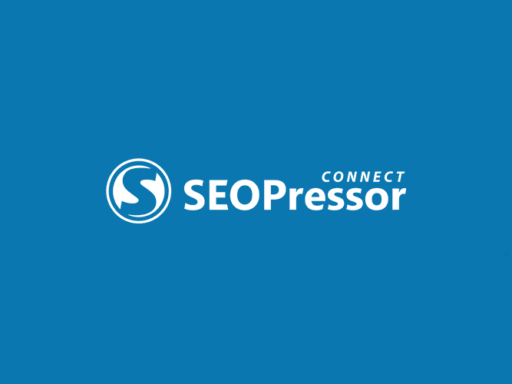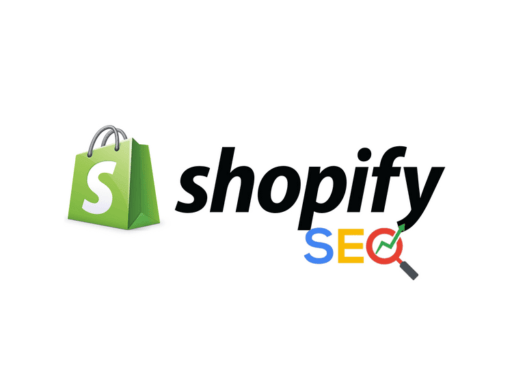Email marketing can be a powerful tool for businesses to reach and engage with their target audience. However, if you’re new to email marketing, it can be overwhelming to know where to start. In this article, we’ll cover the basics of email marketing for beginners, including understanding email marketing, setting up your email marketing campaign, crafting your email content, compliance and best practices, testing and optimization, automation and drip campaigns, integrating with other marketing channels, growing your email list, and frequently asked questions.
First, we’ll help you understand what email marketing is and why it’s important for your business. We’ll then guide you through the process of setting up your email marketing campaign, including selecting an email service provider and creating your email list. Next, we’ll provide tips on crafting effective email content that engages your audience and drives conversions. We’ll also cover compliance and best practices, including how to avoid spam filters and ensure your emails are GDPR-compliant. Finally, we’ll discuss testing and optimization, automation and drip campaigns, integrating with other marketing channels, growing your email list, and answer some frequently asked questions.
Key Takeaways
- Email marketing can be a powerful tool for businesses to reach and engage with their target audience.
- To get started with email marketing, you’ll need to understand the basics of email marketing, set up your email campaign, craft effective email content, and follow compliance and best practices.
- To optimize your email marketing efforts, you’ll want to test and optimize your emails, use automation and drip campaigns, integrate with other marketing channels, and continually grow your email list.
Understanding Email Marketing
Email marketing is a powerful tool that allows you to communicate with your customers and prospects directly through their inbox. It can be used to promote your business, build relationships with your audience, and drive sales. In this section, we will cover the basics of email marketing and the benefits it can provide to your business.
The Basics of Email Marketing
Email marketing involves sending promotional messages or newsletters to a list of email subscribers. These messages can be used to promote your products or services, share news and updates about your business, or provide valuable content to your audience.
To get started with email marketing, you will need to build a list of email subscribers. This can be done by adding a sign-up form to your website, offering an incentive for people to sign up, or collecting email addresses at events or in-store.
Once you have a list of subscribers, you can begin sending emails. It’s important to keep your emails relevant, valuable, and engaging to keep your subscribers interested and engaged. You can use tools like segmentation and personalization to tailor your messages to different groups of subscribers and make them feel more personal.
Benefits of Email Marketing
There are many benefits to using email marketing for your business. Here are a few:
- Cost-effective: Email marketing is one of the most cost-effective marketing strategies available. It doesn’t require a large budget, and you can reach a large audience with just a few clicks.
- Build relationships: Email marketing allows you to build relationships with your audience by providing valuable content, sharing news and updates, and promoting your products and services.
- Drive sales: Email marketing can be used to drive sales by promoting your products or services directly to your audience. You can use targeted messages and promotions to encourage your subscribers to make a purchase.
- Track your results: Email marketing allows you to track your results and see how your messages are performing. You can track open rates, click-through rates, and conversions to see which messages are resonating with your audience and driving results.
Overall, email marketing is a powerful tool that can help you build relationships with your audience, drive sales, and grow your business. By understanding the basics of email marketing and the benefits it can provide, you can begin using this powerful tool to reach your business goals.
Setting Up Your Email Marketing Campaign
Email marketing is a powerful tool to connect with your audience and promote your brand. Setting up your email marketing campaign can seem overwhelming, but it doesn’t have to be. By following these simple steps, you can create an effective email marketing campaign that will help you achieve your marketing goals.
Choosing an Email Marketing Service
The first step in setting up your email marketing campaign is to choose an email marketing service. There are many options available, each with its own set of features and pricing. Some popular email marketing services include:
- Mailchimp
- Constant Contact
- AWeber
- GetResponse
- Campaign Monitor
When choosing an email marketing service, consider your budget, the size of your email list, and the features you need. Look for a service that is easy to use and provides excellent customer support.
Building Your Email List
The next step is to build your email list. Your email list is the foundation of your email marketing campaign, so it’s essential to start building it as soon as possible. There are many ways to build your email list, including:
- Adding a sign-up form to your website
- Offering a lead magnet in exchange for email addresses
- Running a social media contest
Remember to always get permission before adding someone to your email list. You can also segment your email list to send targeted messages to specific groups of subscribers.
Segmenting Your Audience
Segmenting your audience is an essential step in creating an effective email marketing campaign. By dividing your email list into smaller groups based on demographics, interests, or behavior, you can send more targeted messages that are more likely to resonate with your subscribers.
Segmenting your audience can also help you improve engagement and increase conversions. For example, you can send different messages to subscribers who have already made a purchase and those who have not yet made a purchase.
In conclusion, setting up your email marketing campaign doesn’t have to be complicated. By choosing an email marketing service, building your email list, and segmenting your audience, you can create an effective email marketing campaign that will help you achieve your marketing goals.
Crafting Your Email Content
When it comes to email marketing, crafting your email content is the most crucial aspect of your campaign. Your email content should be engaging, informative, and relevant to your audience. Here are some tips to help you craft compelling email content that resonates with your subscribers.
Writing Compelling Subject Lines
Your subject line is the first thing your subscribers will see when they receive your email. It is essential to craft a subject line that grabs their attention and entices them to open your email. Keep your subject line short and sweet, ideally between 30-50 characters. Use action-oriented language and create a sense of urgency to encourage your subscribers to open your email. You can also use personalization to make your subject line more engaging.
Designing Your Email
Your email design should be visually appealing and easy to read. Use a simple and clean layout that highlights your content. Make sure your font size is large enough to read comfortably, and use bold and italic formatting to emphasize important points. Use images and graphics to break up your text and make your email more visually appealing.
Creating Engaging Content
Your email content should be engaging and informative. Provide value to your subscribers by offering helpful tips, insights, or exclusive content. Keep your content short and to the point, and use bullet points or numbered lists to make it easy to read. Use a conversational tone to connect with your audience and encourage engagement.
In conclusion, crafting your email content is a critical aspect of your email marketing campaign. By following these tips and best practices, you can create compelling email content that resonates with your subscribers and drives engagement.
Compliance and Best Practices
When it comes to email marketing, it’s important to follow compliance and best practices to ensure that your emails are effective and not considered spam. In this section, we’ll discuss two key areas of compliance and best practices: understanding CAN-SPAM regulations and email marketing etiquette.
Understanding CAN-SPAM Regulations
CAN-SPAM stands for Controlling the Assault of Non-Solicited Pornography and Marketing Act. This law establishes the rules for commercial email and gives recipients the right to have businesses stop emailing them. Here are some key requirements to follow:
- Your emails must have a clear and accurate subject line.
- You must identify yourself as the sender of the email.
- Your emails must include a physical address.
- You must give recipients the option to opt-out of receiving future emails from you.
- You must honor opt-out requests promptly.
It’s important to note that violating CAN-SPAM regulations can result in penalties of up to $43,280 per email.
Email Marketing Etiquette
In addition to following CAN-SPAM regulations, there are also some best practices to keep in mind when it comes to email marketing etiquette:
- Only send emails to people who have given you permission to do so. This can be done through an opt-in form on your website or by asking customers for their email address at the point of purchase.
- Segment your email list to send targeted messages to specific groups of people. This can help increase open rates and engagement.
- Personalize your emails by using the recipient’s name and other information you have about them.
- Keep your emails short and to the point. People are more likely to read and engage with shorter emails.
- Use a clear call-to-action (CTA) in your emails to encourage recipients to take action, such as making a purchase or visiting your website.
By following these compliance and best practices, you can ensure that your email marketing campaigns are effective and well-received by your audience.
Testing and Optimization
When it comes to email marketing, testing and optimization are crucial for success. By testing different elements of your emails and analyzing their performance, you can improve your open rates, click-through rates, and overall engagement with your audience. In this section, we’ll cover two key aspects of testing and optimization: A/B testing and analyzing email campaign performance.
A/B Testing Your Emails
A/B testing, also known as split testing, is a method of comparing two versions of an email to see which one performs better. To conduct an A/B test, you’ll need to create two versions of your email with one key difference between them. This could be anything from the subject line to the call-to-action button. Then, you’ll send each version to a small portion of your email list and track the results. Once you’ve determined which version performs better, you can send that version to the rest of your list.
Here are a few elements you might consider testing in your emails:
- Subject line
- Preheader text
- Sender name
- Email design
- Call-to-action button
- Personalization
Analyzing Email Campaign Performance
Analyzing the performance of your email campaigns is essential to understanding what’s working and what’s not. By tracking metrics such as open rates, click-through rates, and conversion rates, you can identify areas for improvement and make data-driven decisions about your email marketing strategy.
Here are a few key metrics to keep an eye on:
- Open rate: the percentage of recipients who opened your email
- Click-through rate (CTR): the percentage of recipients who clicked on a link in your email
- Conversion rate: the percentage of recipients who completed a desired action, such as making a purchase or filling out a form
- Bounce rate: the percentage of emails that were undeliverable
- Unsubscribe rate: the percentage of recipients who unsubscribed from your list
In addition to tracking these metrics, it’s important to segment your email list and track performance by segment. This will allow you to tailor your messaging to specific groups of subscribers and improve engagement over time.
By regularly testing and analyzing your email campaigns, you can improve your overall email marketing strategy and drive better results for your business.
Automation and Drip Campaigns
Email marketing is an effective way to reach your target audience, but manually sending emails to each subscriber can be time-consuming and inefficient. This is where email automation and drip campaigns come in. By automating your email marketing campaigns, you can save time and ensure that your subscribers receive relevant content at the right time.
Setting Up Email Autoresponders
Autoresponders are automated emails that are triggered by specific actions or events, such as a new subscriber joining your email list or a subscriber making a purchase. Setting up autoresponders is easy and can be done using email marketing software like Mailchimp or Constant Contact.
To set up an autoresponder, you will need to create a series of emails that will be sent automatically to your subscribers based on their behavior or actions. For example, you might create a welcome email that is sent to new subscribers as soon as they join your list, or a thank you email that is sent to subscribers after they make a purchase.
Creating Drip Campaign Strategies
Drip campaigns are a type of email automation that sends a series of targeted emails to subscribers over a period of time. Drip campaigns are a great way to nurture leads and build relationships with your subscribers.
To create a successful drip campaign, you will need to plan out your email content and schedule. Your content should be relevant to your subscribers and provide value. For example, you might create a drip campaign that educates subscribers about your product or service, or a drip campaign that provides tips and advice related to your industry.
When planning your drip campaign schedule, consider the timing and frequency of your emails. You don’t want to overwhelm your subscribers with too many emails, but you also don’t want to wait too long between emails. A good rule of thumb is to send emails once a week or every two weeks.
In conclusion, automation and drip campaigns are powerful tools that can help you save time and improve your email marketing strategy. By setting up email autoresponders and creating drip campaign strategies, you can deliver relevant content to your subscribers at the right time and build stronger relationships with your audience.
Integrating with Other Marketing Channels
As a beginner in email marketing, it is important to understand that email marketing should not be used in isolation. It is essential to integrate your email marketing efforts with other marketing channels to achieve optimal results.
Combining Social Media and Email Marketing
Social media platforms such as Facebook, Twitter, and Instagram can be used to complement your email marketing efforts. By integrating social media and email marketing, you can increase your reach and engagement with your audience.
You can use social media to promote your email campaigns and encourage your followers to subscribe to your email list. Similarly, you can use email marketing to promote your social media accounts and encourage your subscribers to follow you on social media.
Email and Content Marketing Synergy
Content marketing and email marketing are two powerful marketing strategies that can be used together to achieve great results. By using content marketing to create valuable content, you can attract new subscribers to your email list.
Once you have their email addresses, you can use email marketing to nurture your subscribers and build a relationship with them. You can send them personalized content based on their interests and preferences, which will help to keep them engaged and interested in your brand.
In summary, integrating your email marketing efforts with other marketing channels can help you to achieve better results. By combining social media and email marketing, you can increase your reach and engagement with your audience. Similarly, by using content marketing and email marketing together, you can attract new subscribers and build a relationship with them.
Growing Your Email List
One of the most important aspects of email marketing is having a quality email list. Without a list of engaged subscribers, your email campaigns will not be effective. Here are some strategies to help you grow your email list:
Lead Magnets and Opt-In Strategies
Offering a lead magnet is a great way to entice website visitors to sign up for your email list. A lead magnet is a free resource that you offer in exchange for someone’s email address. Some examples of lead magnets include ebooks, checklists, templates, and webinars. When creating a lead magnet, make sure it is valuable and relevant to your target audience.
Another effective opt-in strategy is to offer a content upgrade. A content upgrade is a bonus piece of content that is directly related to the blog post or article a reader is currently reading. For example, if you are writing an article about email marketing, you could offer a free email marketing checklist as a content upgrade. Content upgrades are a great way to increase the conversion rate of your email opt-in forms.
Promoting Your Newsletter
Once you have a lead magnet or content upgrade in place, it’s time to start promoting your newsletter. Here are some ways to promote your email list:
- Add a sign-up form to your website: Make sure your sign-up form is prominently displayed on your website. You can add it to your homepage, sidebar, or footer.
- Use pop-ups: Pop-ups can be effective, but make sure they are not intrusive or annoying to your website visitors.
- Offer exclusive content: Offer exclusive content to your email subscribers. This can be a discount code, early access to a product, or exclusive content that is not available on your website.
- Use social media: Promote your email list on social media. Share your lead magnet or content upgrade on your social media channels.
By using lead magnets and opt-in strategies, and promoting your newsletter, you can grow your email list and improve the effectiveness of your email marketing campaigns.
Frequently Asked Questions
What are the essential steps to get started with email marketing?
To get started with email marketing, you need to follow these essential steps:
- Choose an email marketing service provider that suits your needs.
- Build your email list by collecting email addresses from your website visitors and customers.
- Create a targeted email campaign by segmenting your email list based on demographics and interests.
- Design an engaging email template that reflects your brand.
- Write compelling email copy that encourages your subscribers to take action.
- Test your email campaign to ensure that it looks great on all devices.
- Send your email campaign and track its performance.
How can I create an effective email marketing strategy?
To create an effective email marketing strategy, you need to:
- Define your email marketing goals and objectives.
- Identify your target audience and segment your email list accordingly.
- Create a content plan that aligns with your email marketing goals and objectives.
- Design an email template that reflects your brand and captures your subscriber’s attention.
- Write compelling email copy that encourages your subscribers to take action.
- Test and optimize your email campaigns to improve their performance.
- Monitor your email campaign metrics and adjust your strategy accordingly.
What are some examples of successful email marketing campaigns?
Some examples of successful email marketing campaigns include:
- Airbnb’s personalized welcome emails that encourage users to complete their profile.
- Dropbox’s referral program that rewards users for inviting their friends to join.
- Grammarly’s educational emails that provide tips and tricks for improving writing skills.
- J.Crew’s promotional emails that offer exclusive discounts to subscribers.
- Kate Spade’s cart abandonment emails that remind users of items left in their cart and offer a discount to complete the purchase.
Where can I find templates to help me begin with email marketing?
You can find email marketing templates on various websites, including:
- Mailchimp
- Hubspot
- Constant Contact
- Campaign Monitor
- GetResponse
- Zoho Campaigns
Are there any free resources available for learning email marketing?
Yes, there are many free resources available for learning email marketing, including:
- Hubspot’s Email Marketing Certification Course
- Mailchimp’s Email Marketing Field Guide
- Campaign Monitor’s Email Marketing Best Practices Guide
- Sendinblue’s Email Marketing Guide for Beginners
- AWeber’s Email Marketing for Beginners Guide
What is the most important rule to follow when engaging in email marketing?
The most important rule to follow when engaging in email marketing is to always provide value to your subscribers. This means sending relevant and engaging content that meets their needs and interests. Avoid sending too many promotional emails or bombarding your subscribers with irrelevant content, as this can lead to high unsubscribe rates and a negative impact on your brand reputation.





